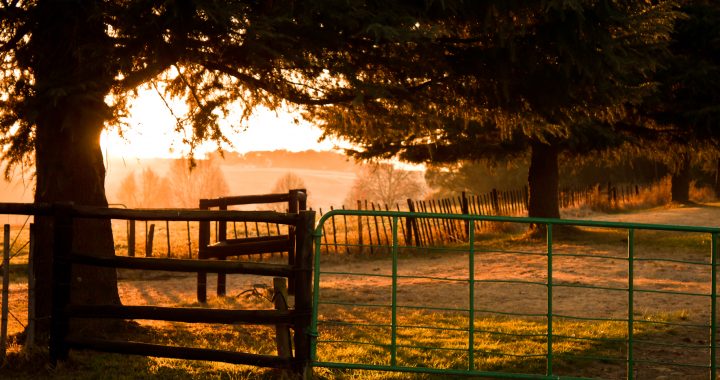Who’s the liar now?
We don’t often get an opportunity to compare apples to apples in terms of social media content vs reality, especially when it comes to agriculture. Producers reading the Wall Street Journal’s “Instagram Stars Make Farm Life Look Delightful – Minus the Manure” might shake their heads in disbelief. Consumers who haven’t had a chance to ever visit a farm might be left with completely the wrong idea. Contrast that with the “How Do We Make Connections” session presented at the Canadian Industry Beef Conference (CBIC 2021). Let’s just say that the two could not have been farther apart in content or theme… starting with the featured personalities.
The Wall Street Journal article starts with the “reigning Mrs. Utah and Julliard-trained ballerina” who emphasizes posts portraying a “farmcore” aesthetic (apparently, it’s a thing) of dancing in the barn in cowboy boots, carefully-organized baskets of eggs with “bonus points” if some blue ones find their way into the mix. Children, readers are warned, can “make a beautiful space not so beautiful”. Tank tops are not Prairie-child wear; and Paw Patrol sweatshirts wreck an otherwise picture-perfect scene.
The second featured farm-influencer, Parisienne Farmgirl, named for her love of Paris and all things French. Like the other influencers presented, Ms. Paris agrees that farmcore comes with an ick factor that is best left out of the photos: the pancetta is gorgeous when coated generously with herbs… What’s behind that photo? “It’s me raising that pig and the smell that goes with it” Then there’s the “amount of manure my cow makes… it’s alarming.” Neither makes it to Instagram.
On the other hand, the CBIC presentation featuring highlights of connecting two social media influencers with two real Canadian beef producers on their farms. Apryl Munro of @thiskindalife was a guest of Gordon Dibble of Dibbhurst Farms near Ingersoll, Ontario. Dibble owns a 4th generation family farm consisting of a 1,200-head feedlot operation and 650 acres of cropland used to feed the operation.
A little closer to home for Gentec, Cherie Copithorne-Barnes, CEO of CL Ranches (and new addition to the Gentec Management Advisory Board) welcomed Dina Ottoni Battistessa of @move.play.mom. Like Dibbhurst Farms, CL Ranches is a 4th generation family ranch, operating as a cow/calf, backgrounding and custom-farming operation. Dina arrived with her father and two children.
Combined, the video clips of the farm tours and the conference session provided an interesting and, at times, surprising take on how perceptions differed from reality. The guests mentioned numerous times how information in online documentaries and from friends differed so significantly from what they were seeing and hearing on the ranch. They were particularly surprised at attention and effort put into ensuring the health and welfare of the animals; the quality of the food provided to them; and the commitment of the producers to sustainable production. The latter was evidenced on both operations through their focus on clean water, soil health and nutrients, and—on Gordon’s operation—barns outfitted with geothermal heating capability, LED lighting for minimal energy usage, and natural ventilation.
And the poop—so conveniently left out of the Wall Street Journal article—comes back into the picture. Even the children were able to piece the cycle together where the grass is cycled through the cow: some goes into making beef, some comes out the other end and is used by the soil, as nature intended, to create more healthy grass to perpetuate the cycle. The producers also explained how bulk manure is collected and spread across the land to ensure a natural, sustainable farming environment.
Apryl was surprised at Gordon being younger than her; Dina, that one of the ranchers was female; and both by the fact that the food was produced in a family (not factory) setting in modern, clean, and productive systems, not Old MacDonald’s rickety, spider’s-webby Farm, and that the producers had an emotional attachment to their animals and provided them with the best care possible thus ensuring the health of their cows and the resulting food. Clearly, there is work yet to be done in informing the public.
All that said, the Wall Street Journal and the CBIC profiles did agree that, whether they experience a “farmcore” or actual “farm-life” lifestyle, these “kids see things that most kids will never see or understand”. In a lighter moment, for example, one of Dina’s children asked Cherie if the bulls were there to protect the cows. Cherie responded that they were not, and that the cows were meaner than the bulls anyway. The camera then panned to the fireplace crackling in the corner of the room as the scene faded to black… Hopefully, Mom explained the true function of the bulls on the drive back to Calgary.
Cherie summed up the divergence between the presentations best. In terms of getting accurate information out to a wider audience, you want to highlight the best aspects of ranch life and beef production but you must also be willing to talk about the good, the bad, and the ugly … and to defend the “necessary ugly”. You have to be prepared to be honest. Additionally, many producers and producer organizations just talk about opening their farms to visitors. Cherie feels she gets the most out of her time by volunteering for organizations (such as the Calgary Stampede) where she has access to a million people to whom she could never show her farm, thus allowing her the chance to talk about beef and the science behind it.

